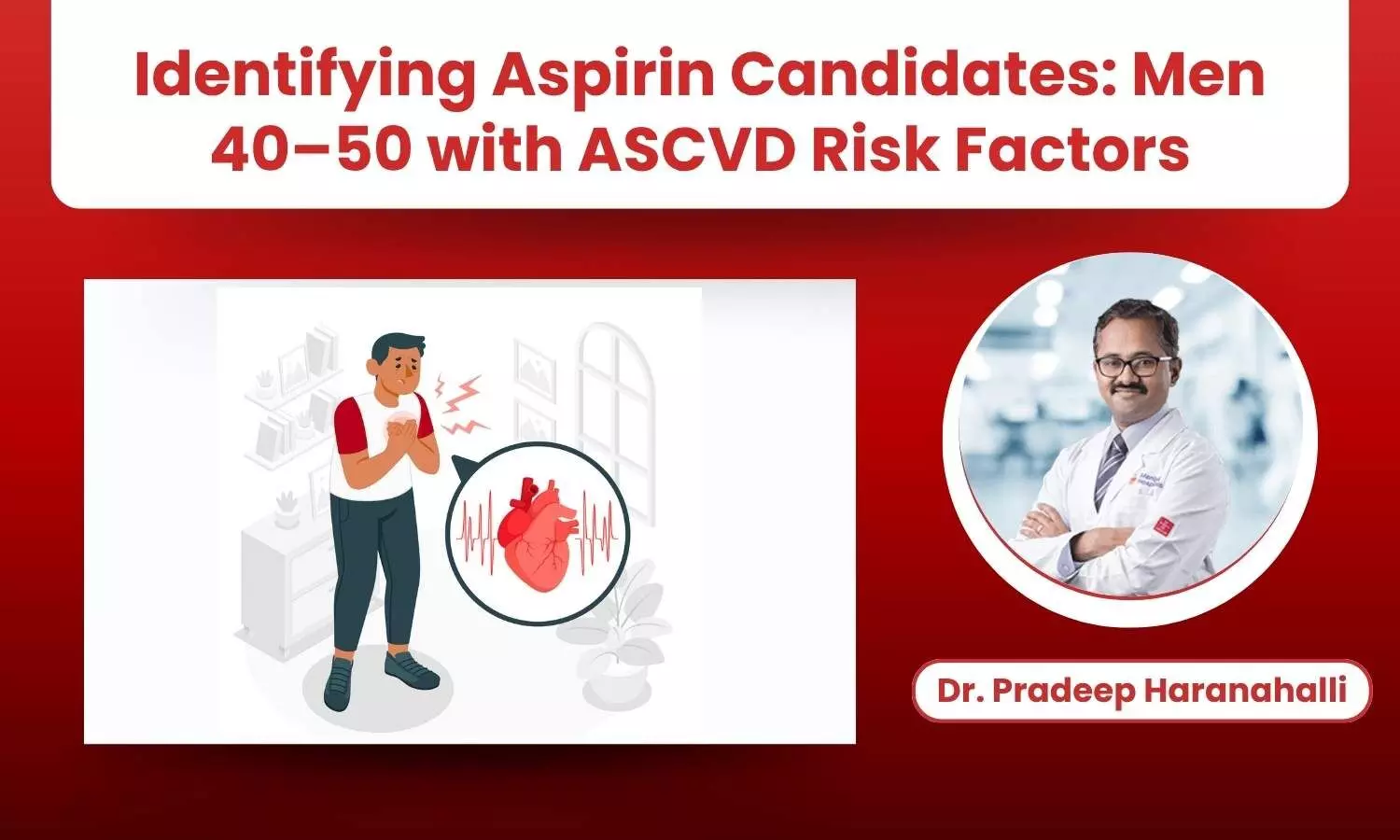By Dr. Pradeep Haranahalli
Premature ASCVD: Why Age 40–50 Males Need Closer Attention? Premature ASCVD is rising sharply in Indian men aged 40–50, demanding earlier intervention. Recent data show that Indian men aged 40–49 years have 3.7 times higher odds of CVD, increasing to 5.7 times in those aged 49–54. (1) Nearly 45% of first MIs in South Asians occur in those aged <55 [53 years in India] (2). This highlights both the underdiagnosis of intermediate CV risk factors and the cumulative risk burden driving early ASCVD in Indian men.Hypertension, Dyslipidemia, and Family History of CVD: A Dangerous TrioHypertension markedly elevates CVD risk—hypertensive adults are over 11 times more likely to develop CVD [OR: 11.58, P<0.01]. (3) Real-world data show that stage 1 hypertension increases the 10-year CV risk by 35% and lifetime risk by 36%. Progression to stage 2 hypertension raises these risks by over 2.5 times [HR: 2.56; 2.29]. (4) Findings from the Framingham Heart Study indicate that having CVD in at least one parent doubled the 8-year CVD risk among men. (5)The MASHAD study reported a hazard ratio of 2.71 (95% CI: 1.12–6.57; P < 0.05), indicating a 171% higher risk of MI among men with high total cholesterol. (6)Role of Aspirin: Pathophysiological RationaleWhy does Aspirin continue to be relevant even today in Primary Prevention?ASCVD is driven by endothelial dysfunction and a prothrombotic state, where heightened platelet activity promotes thrombosisAspirin’s ability to attenuate platelet-mediated thrombotic events and modulate vascular inflammation supports its consideration in high-risk men, especially where bleeding risk is low. (7)In Indian men with clustering of metabolic risk factors, the pro-inflammatory and prothrombotic environment enhances the relevance of antiplatelet strategies like aspirin. (8)Clinical Case Exemplar Latest Evidence and Recommendations Supporting Aspirin UseGuidelineTarget PopulationRecommendationConditionsDCRM 2.0 [2024] (9)Adults aged 40–59 years with multiple CV risk factors (e.g., hypertension, dyslipidemia, family history of early ASCVD)Low-dose aspirin may be consideredBleeding risk should be carefully evaluated and monitoredUSPSTF [2022] (10)Adults aged 40–59 years with ≥10% 10-year ASCVD riskRecommends initiating aspirinIf bleeding risk is not elevatedESC [2021] (11)Individuals with hypertension, dyslipidemia, and F/H of early ASCVDLow-dose aspirin may be consideredIf overall CV risk is high (SCORE2 ≥5%) and bleeding risk is lowACC/AHA [2019] (10)Adults aged 40–70 years at high ASCVD riskSupports considering aspirinProvided bleeding risk is lowTakeaway for Clinical PracticeIn Indian men aged 40–50 with hypertension, dyslipidemia, and a family history of premature ASCVD, early recognition of the cumulative risk is critical. Evidence supports the consideration of selective low-dose aspirin use for primary prevention when ASCVD risk is high and bleeding risk is low. Decisions should be individualized, integrating guidelines, bleeding risk tools, and lipid and hypertension management.References:1. Ram, Sumit, et al. "Prevalence and determinants of self-reported heart disease among Indian men aged 15–54 years: Evidence from NFHS-5." Clinical Epidemiology and Global Health, vol. 23, Sept.–Oct. 2023, 101374. Elsevier, https://doi.org/10.1016/j.cegh.2023.101374. Accessed 30 May 2025.2. Puri, Raman et al. “Lipid Association of India 2023 update on cardiovascular risk assessment and lipid management in Indian patients: Consensus statement IV.” Journal of clinical lipidology vol. 18,3 (2024): e351-e373. doi:10.1016/j.jacl.2024.01.0063. Biswas, Ayantika et al. “Linkages between Hypertension and Coronary Heart Disease in India: Evidence from India Human Development Survey-2 (2011-2012).” Indian journal of community medicine : official publication of Indian Association of Preventive & Social Medicine vol. 42,4 (2017): 200-203. doi:10.4103/ijcm.IJCM_168_164. Peng, Xinyi et al. “Stage 1 Hypertension and the 10-Year and Lifetime Risk of Cardiovascular Disease: A Prospective Real-World Study.” Journal of the American Heart Association vol. 12,7 (2023): e028762. doi:10.1161/JAHA.122.0287625. Imes, Christopher C, and Frances Marcus Lewis. “Family history of cardiovascular disease, perceived cardiovascular disease risk, and health-related behavior: a review of the literature.” The Journal of cardiovascular nursing vol. 29,2 (2014): 108-29. doi:10.1097/JCN.0b013e31827db5eb6. Hedayatnia, Mahshad et al. “Dyslipidemia and cardiovascular disease risk among the MASHAD study population.” Lipids in health and disease vol. 19,1 42. 16 Mar. 2020, doi:10.1186/s12944-020-01204-y7. Cofer, Lucas B et al. “Aspirin for the Primary Prevention of Cardiovascular Disease: Time for a Platelet-Guided Approach.” Arteriosclerosis, thrombosis, and vascular biology vol. 42,10 (2022): 1207-1216. doi:10.1161/ATVBAHA.122.3180208. Sypniewska G. Pro-Inflammatory and Prothrombotic Factors and Metabolic Syndrome. EJIFCC. 2007 Feb...
